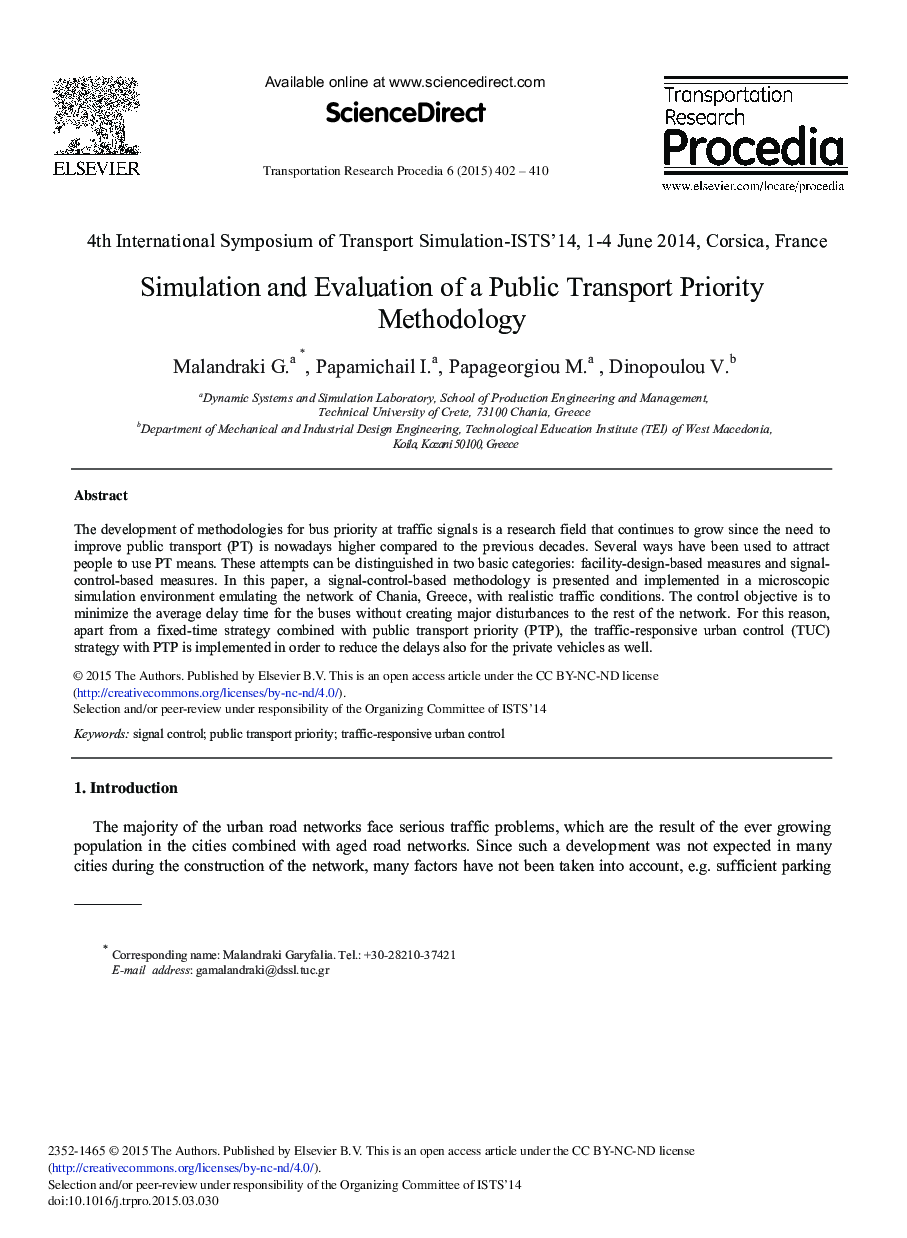| Article ID | Journal | Published Year | Pages | File Type |
|---|---|---|---|---|
| 1106567 | Transportation Research Procedia | 2015 | 9 Pages |
The development of methodologies for bus priority at traffic signals is a research field that continues to grow since the need to improve public transport (PT) is nowadays higher compared to the previous decades. Several ways have been used to attract people to use PT means. These attempts can be distinguished in two basic categories: facility-design-based measures and signal-control-based measures. In this paper, a signal-control-based methodology is presented and implemented in a microscopic simulation environment emulating the network of Chania, Greece, with realistic traffic conditions. The control objective is to minimize the average delay time for the buses without creating major disturbances to the rest of the network. For this reason, apart from a fixed-time strategy combined with public transport priority (PTP), the traffic-responsive urban control (TUC) strategy with PTP is implemented in order to reduce the delays also for the private vehicles as well.
